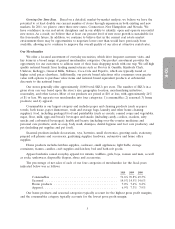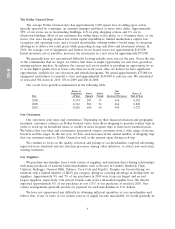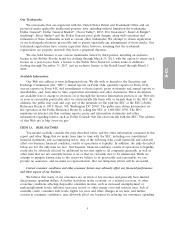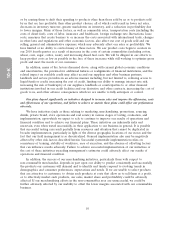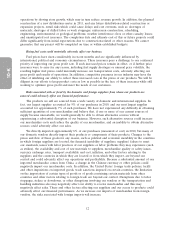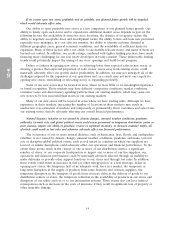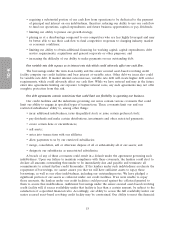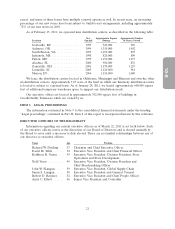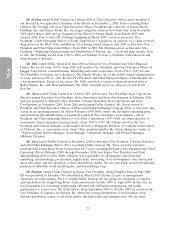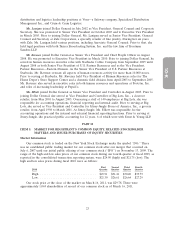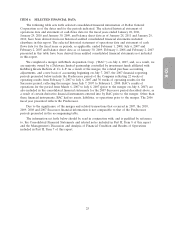Dollar General 2010 Annual Report Download - page 93
Download and view the complete annual report
Please find page 93 of the 2010 Dollar General annual report below. You can navigate through the pages in the report by either clicking on the pages listed below, or by using the keyword search tool below to find specific information within the annual report.
10-K
Material damage to, or interruptions to, our information systems as a result of external factors, staffing
shortages and difficulties in updating our existing technology or developing or implementing new technology
could have a material adverse effect on our business or results of operations.
We depend on a variety of information technology systems for the efficient functioning of our
business. Such systems are subject to damage or interruption from power outages, computer and
telecommunications failures, computer viruses, security breaches and natural disasters. Damage or
interruption to these systems may require a significant investment to fix or replace them, and we may
suffer interruptions in our operations in the interim. Any material interruptions may have a material
adverse effect on our business or results of operations.
We also rely heavily on our information technology staff. Failure to meet these staffing needs may
negatively affect our ability to fulfill our technology initiatives while continuing to provide maintenance
on existing systems. We rely on certain vendors to maintain and periodically upgrade many of these
systems so that they can continue to support our business. The software programs supporting many of
our systems were licensed to us by independent software developers. The inability of these developers
or us to continue to maintain and upgrade these information systems and software programs would
disrupt or reduce the efficiency of our operations if we were unable to convert to alternate systems in
an efficient and timely manner. In addition, costs and potential problems and interruptions associated
with the implementation of new or upgraded systems and technology, such as the implementation of
our new supply chain solution, or with maintenance or adequate support of existing systems could also
disrupt or reduce the efficiency of our operations.
Failure to attract and retain qualified employees, particularly field, store and distribution center
managers, and to control labor costs, as well as other labor issues, could adversely affect our financial
performance.
Our future growth and performance depends on our ability to attract, retain and motivate qualified
employees, many of whom are in positions with historically high rates of turnover such as field
managers and distribution center managers. Our ability to meet our labor needs, while controlling our
labor costs, is subject to many external factors, including competition for and availability of qualified
personnel in a given market, unemployment levels within those markets, prevailing wage rates,
minimum wage laws, health and other insurance costs, and changes in employment and labor laws
(including changes in the process for our employees to join a union) or other workplace regulation
(including changes in entitlement programs such as health insurance and paid leave programs). To the
extent a significant portion of our employee base unionizes, or attempts to unionize, our labor costs
could increase. In addition, we are evaluating the potential future impact of recently enacted
comprehensive healthcare reform legislation, which will likely cause our healthcare costs to increase.
While the significant costs of the healthcare reform legislation will occur after 2013 due to provisions of
the legislation being phased in over time, changes to our healthcare costs structure could have a
significant negative effect on our business. Our ability to pass along labor costs to our customers is
constrained by our low price model.
Our profitability may be negatively affected by inventory shrinkage.
We are subject to the risk of inventory loss and theft. We experience significant inventory
shrinkage, and we cannot assure you that incidences of inventory loss and theft will decrease in the
future or that the measures we are taking will effectively address the problem of inventory shrinkage.
Although some level of inventory shrinkage is an unavoidable cost of doing business, if we were to
experience higher rates of inventory shrinkage or incur increased security costs to combat inventory
theft, our financial condition could be affected adversely.
15


